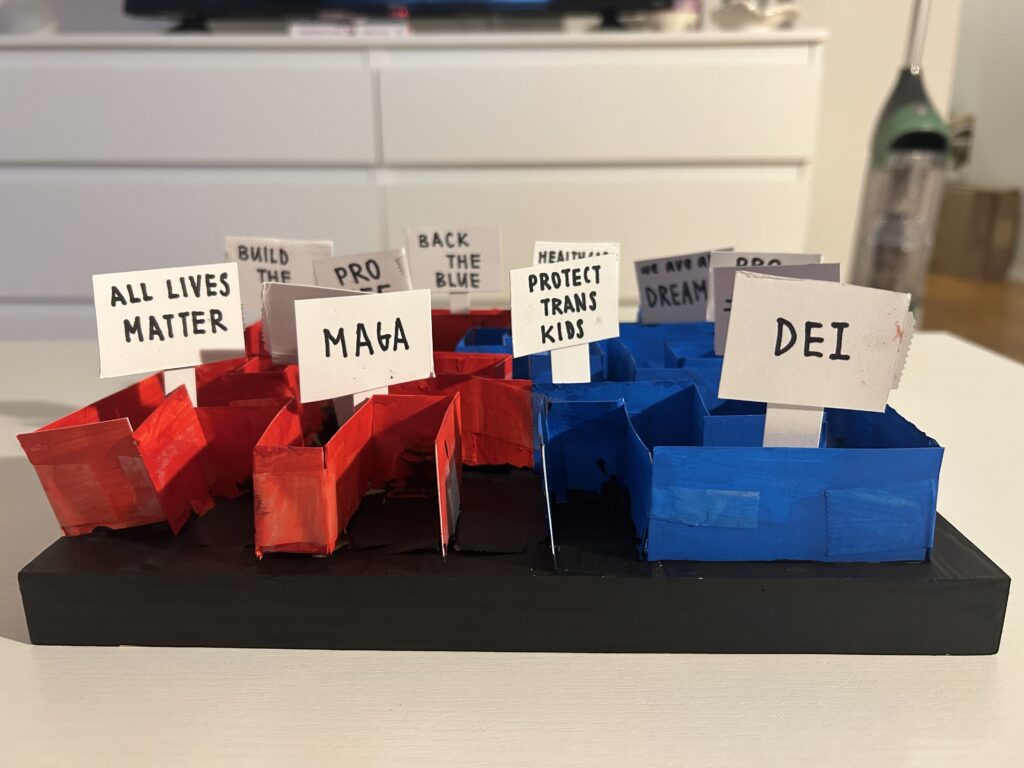
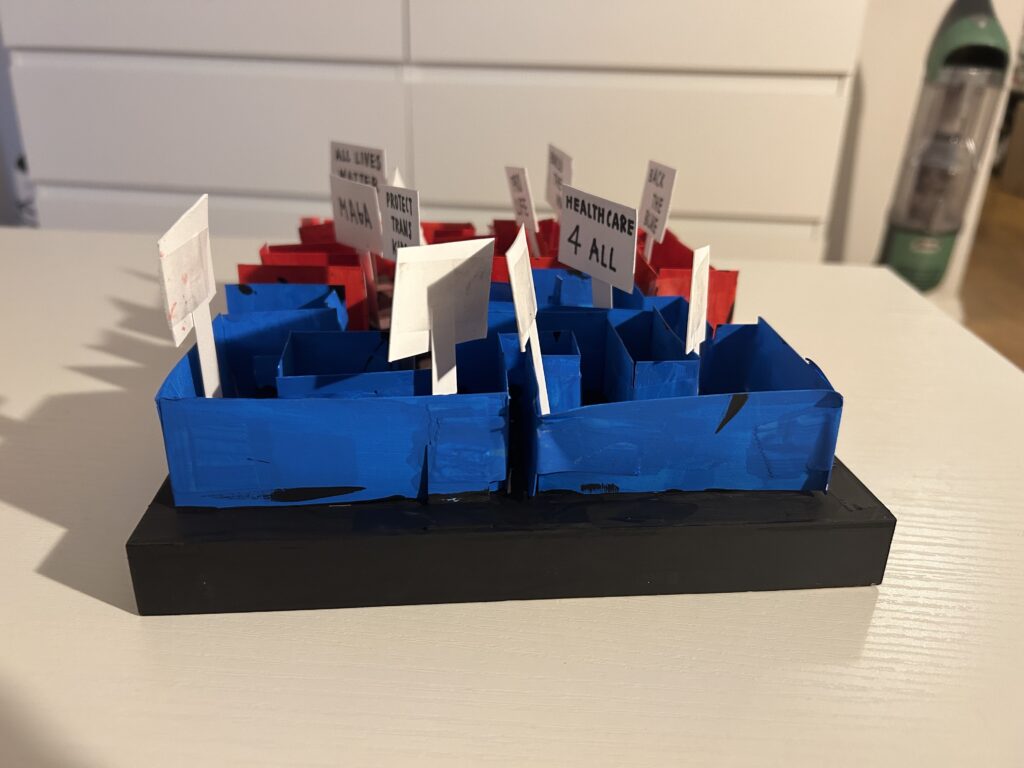
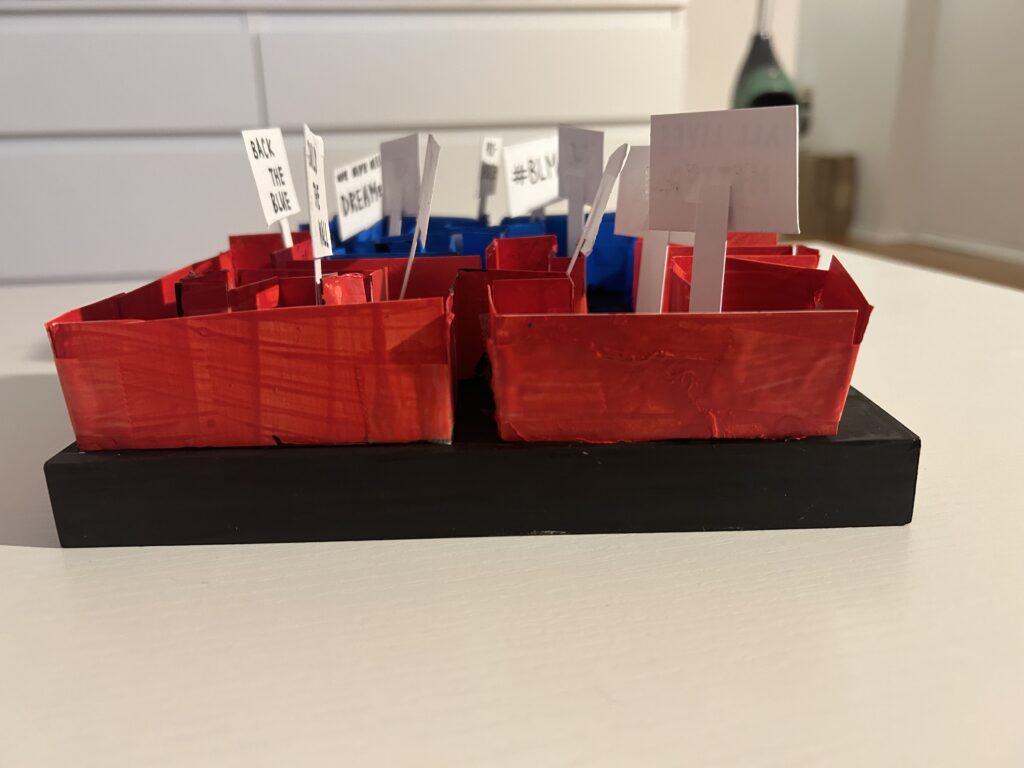
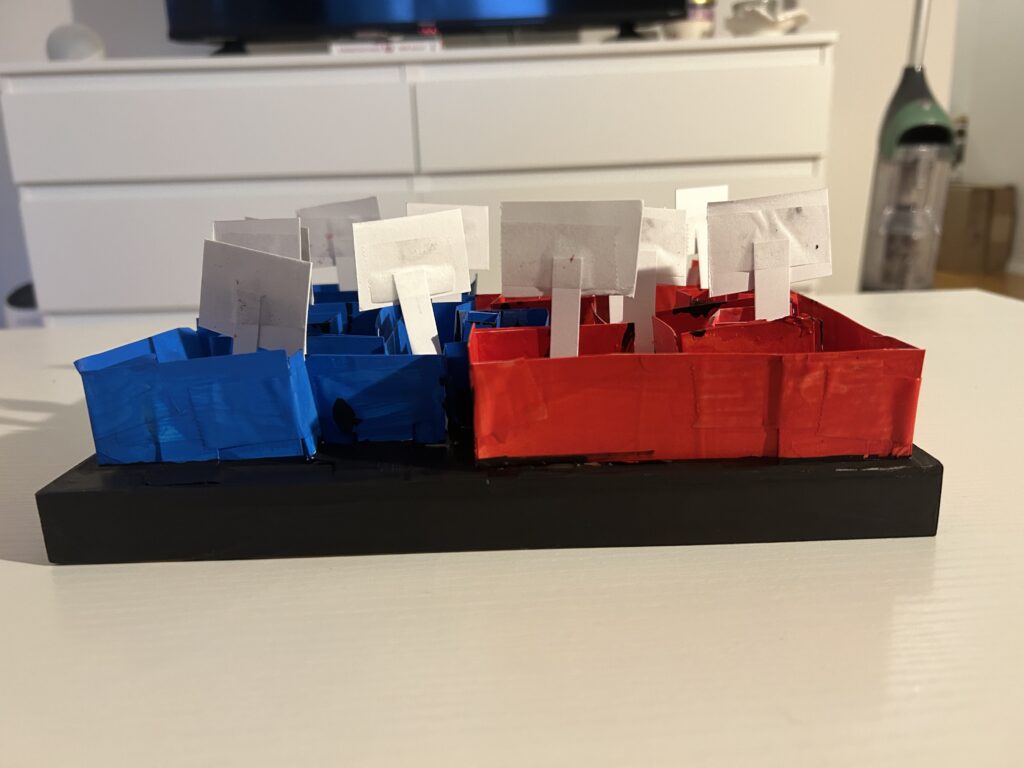
My keyword is polarization: the growing ideological divide between political beliefs, particularly in the United States. I am interested in studying how this divide has intensified, leading to less compromise and cooperation.
The maze represents the polarized nature of American politics, with two distinct paths symbolizing the major political parties. Each side, labeled with important issue areas to each group, reflects how parties become trapped in ideological bubbles. The dead ends show how these paths often lead to stagnation rather than solutions. It also shows how an individual can get “lost” in their own ideas, unable to see the other perspectives. However, the avatar’s limitation lies in its lack of visible people—it doesn’t fully capture who experiences this polarization or how they might escape it.
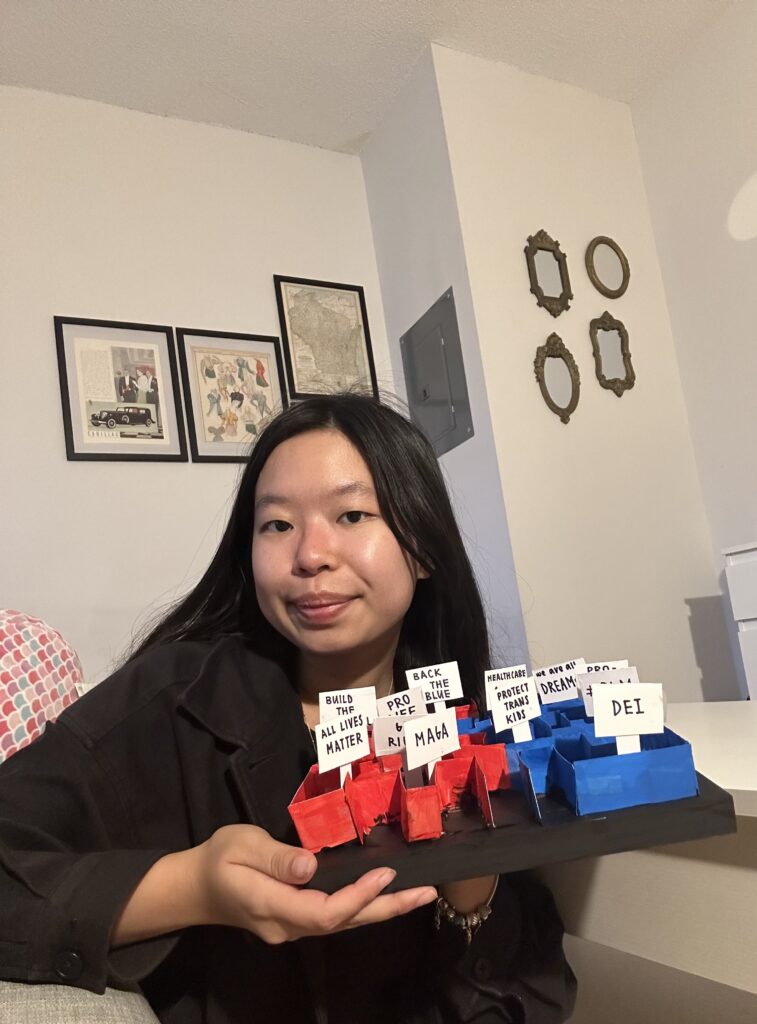
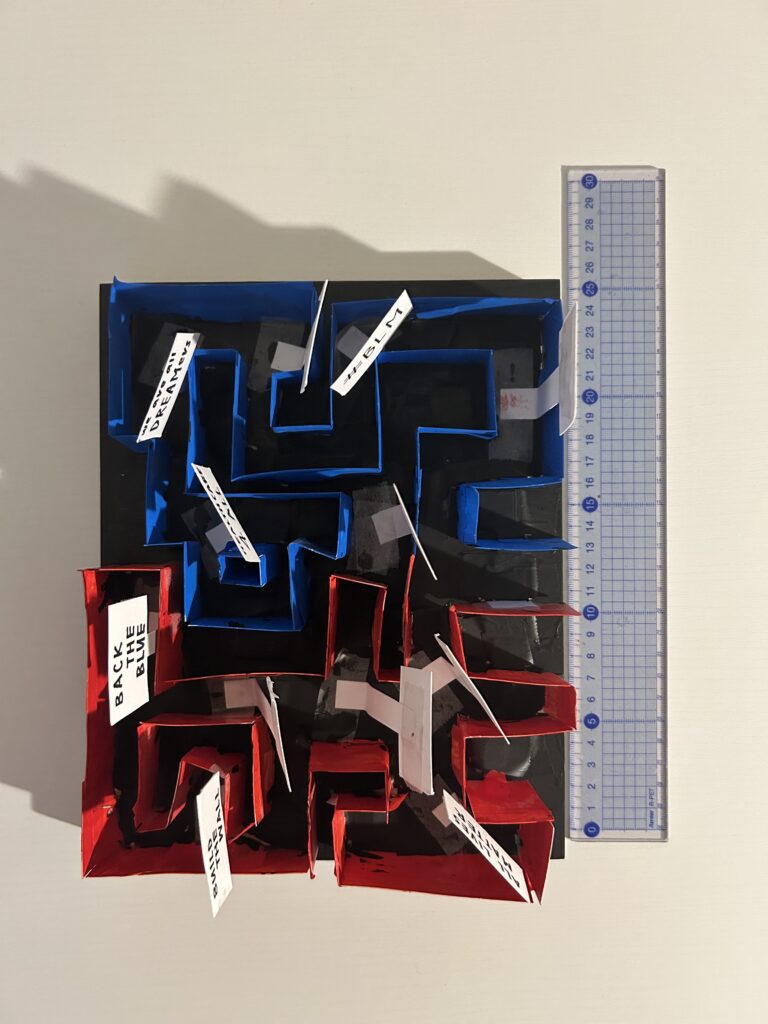
Updated Avatar Reflection
From this semester’s exploration of my keyword, I learned more about how polarization manifests in online spaces, especially how echo chambers and algorithmic filtering contribute to reinforcing ideological divides. Platforms like social media intensify polarization by promoting content that aligns with users’ pre-existing beliefs, creating an environment where opposing views are rarely encountered. Understanding these dynamics has highlighted the importance of addressing digital polarization as a key factor in bridging ideological gaps.
I also learned that there are individuals and efforts to counteract the effects of polarization. Efforts to promote media literacy, encourage dialogues across divides, and design algorithms that expose users to diverse viewpoints offer pathways toward reducing polarization. Solutions require intentional action and collaboration, but they demonstrate that bridging the divide is possible.
In future iterations of the avatar, I would design it to include individuals navigating the maze, representing voters, politicians, and social media users. These figures would interact with the maze, some stuck in dead ends and others searching for ways to connect with the opposite side. I would also add bridges or alternative pathways between the two sides of the maze, symbolizing opportunities for dialogue and compromise.
To reflect the influence of online spaces, I would incorporate symbols like social media icons, filters, or algorithmic barriers within the maze. These elements would demonstrate how digital platforms shape the flow of information and reinforce ideological divides.
